#age of empires ii the age of kings
Text

#age of empires#Age of Empires II The Age of Kings#age of empires ii#Age of Empires 2#video games#gaming#video game polls#polls#tumblr polls#strategy
52 notes
·
View notes
Text
Losers' Round 1 – Region C – Match 3

#gvgb64#age of empires ii the age of kings#age of empires 2#age of empires ii#age of empires#aoe2#aoeii#aoe#age of kings#final fantasy vii remake intergrade#ff7#ff7 remake#intergrade#ffvii#final fantasy 7#final fantasy vii#final fantasy
6 notes
·
View notes
Text
Ryu Number: Jack Jackson
In 1120, the son—and anticipated heir—of King Henry I of England died in a maritime accident. In a time and place where a succession crisis popped off every time a monarch bit it even with preparation beforehand, this was Kind Of Bad.
The only legitimate child Henry I had left was Matilda (also called Maud), who'd been married to the Holy Roman Empire for a while, but was now married to the Count of Anjou, who was Not Popular, especially among the sort of people you wanted to be popular among if you wanted them to be alright with you ruling the kingdom. Henry I tried to go to bat for Matilda, but time ran out, and in 1135, he died. And that's just about when the Anarchy began.
...No, really, that's what the civil war was called: "The Anarchy." I would rather not have a civil war, but you've got to admit that that's a pretty hardcore name for one. Also actually it actually took a few years for Matilda to set up and get to civil-warring, but "and after a few years the Anarchy began" doesn't sound nearly as cool, right?
Matilda's main opponent in this game of thrones was Henry I's nephew, Stephen of Blois, who, having the good fortune to actually be in the area, wasted no time taking the reins. An awful lot of stuff happened after, but eventually everyone got real sick of fighting and in 1153 the big names hammered out the Treaty of Wallingford, that agreed that Stephen would be king, actually, but once he shuffled off Matilda's son—also named Henry, because history isn't hard enough to keep track of already—would take the throne.
...This isn't really about any of these guys, though.
The Pillars of the Earth is a 1989 historical fiction novel by Welsh author Ken Follett. Using the Anarchy and related events as a backdrop, it tells the story of a lot of folks from the priory and village of Kingsbridge, England having a Real Subpar Time. Secrets and Politics happen, a lot of it churchish, and it trickles down to the little people in the worst of ways.
Also there's a bunch about building cathedrals; some folks in the book are Really Deep Into That, especially Jack Jackson, one of the more important characters from the book who gets dealt a rotten hand and makes do nonetheless.
It's not the sort of media you'd expect to get a video game adaptation out of, but it got one anyway.

And I'm definitely not complaining, 'cause that means Jack Jackson has a Ryu Number of at most 3.

...Guess who finally finished studying the newest Age of Empires II: Definitive Edition DLC? Victors and Vanquished features a numbers of historical scenarios, including one where you play as Henry's nephew, Stephen, Stephen's brother, Henry, and Stephen's wife, Matilda, against the armies of Henry's daughter, Matilda, and Matilda's son, Henry.
This is giving me flashbacks back to elementary school when every third girl was named either Ashley or Jessica. I cut the knot by simply remembering no one's name, which worked badly.
Anyway, as a bonus, have this list of characters who—taking into account only the games I have gone through myself—appear only in Age of Empires II: Definitive Edition.


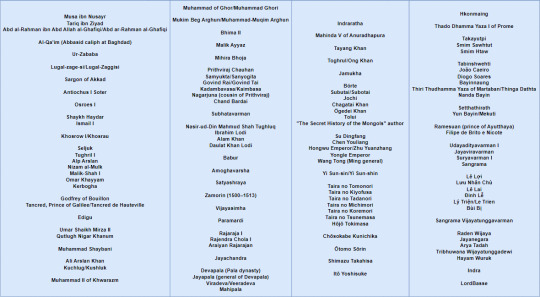
#ryu number#ryu#teppen#oda nobunaga#age of empires ii: definitive edition#stephen king of england#ken follett's pillars of the earth#jack jackson
52 notes
·
View notes
Text
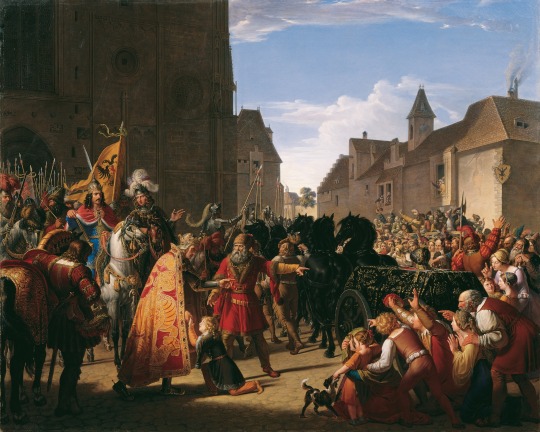
Wenceslas asks Rudolf of Habsburg for the body of his father King Ottokar II of Bohemia
by Anton Petter
#anton petter#art#history#wenceslas#rudolf of hapsburg#ottokar ii of bohemia#king ottokar ii of bohemia#europe#european#medieval#middle ages#knights#germany#austria#styria#bohemia#hapsburg#habsburg empire#habsburg#habsburg monarchy#rudolf of habsburg
108 notes
·
View notes
Text
How the Chantry (and Orlais) Turned Kirkwall into a Police State
One aspect of the Dragon Age series that I’ve always found odd is the way in which rather crucial political and historical context surrounding major conflicts the player must decide tends to be relegated to codices, outside materials (e.g., books), and optional dialogue with minor characters... meaning that many if not most players don’t seem to end up actually seeing it. Wicked Eyes and Wicked Hearts (Dragon Age Inquisition) in particular has become somewhat notorious for what it left out, but it’s far from unusual.
With regard to Dragon Age II, there’s a popular perception among fans that the troubles in Kirkwall can be attributed almost entirely to rogue behavior on the part of Knight-Commander Meredith and various evil blood mages. This is understandable given the overall narrative framing and Bioware’s aforementioned problem of making key context very easy to miss. But once we take a look at the full picture, it ought to be clear that the Chantry did not simply “fail” in their responsibilities towards the mages or towards the citizens of Kirkwall more broadly — they actively created and maintained the very nightmare they later professed to be dismayed about.
Moreover, despite the running Mages vs. Templars theme, the mages were hardly the only one's who suffered under Meredith's rule. Indeed, Kirkwall endured a brutal 16-year-long dictatorship (9:21-9:37 Dragon) that came into being courtesy of the Chantry and the Orlesian empire and only fell due to the mage rebellion.
Here I’ll describe in detail (with sources and citations) the story of how the Chantry turned Kirkwall into a police state and one that ultimately descended into what the writers themselves termed "genocide."
The Templar Coup of 9:21 Dragon
Our story begins with the conflict between Viscount Perrin Threnhold of Kirkwall and Emperor Florian Valmont of Orlais.
With the beginning of the Dragon Age (the era), the Orlais had experienced a major loss of territory and influence. In 9:00-9:02 Dragon (the exact dates conflict), the Fereldan Rebellion led by Maric Theirin and Loghain Mac Tir overthrew Meghren, the last Orlesian King of Ferelden (personally appointed to the position by Emperor Florian himself), and reclaimed their country’s independence after nearly a century of Orlesian occupation. These events are described in detail in The Stolen Throne. Emperor Florian, however, remained reluctant to recognize Ferelden’s sovereignty -- with peace between the two countries not being fully established until his death and the ascension of his niece Celene to the throne in 9:20 Dragon -- and may have been eager to reassert Orlesian influence in the region. Perrin Threnhold, meanwhile, ascended to the position of viscount of Kirkwall (also formerly occupied by Orlais) in 9:14 Dragon. At some point during this volatile period, Threnhold decided to raise money by charging what the Orlesians regarded as unreasonably high tolls for passage through the Waking Sea, which also controlled Orlais’s sea access to Ferelden and its capitol, Denerim.
For reference, here’s a map with my highlights:

The Orlesian Chantry, founded by Kordillus Drakon I (the first emperor of Orlais), had from the beginning been dominated by Orlesian interests. According to World of Thedas vol. 1 (p. 56): “The Orlesian capital, Val Royeaux, is home to the Chantry’s Grand Cathedral, the center of the Andrastian religion’s power. Over multiple Blights, the Orlesians have used the Chantry to expand their influence beyond the nation’s impressive borders, notably to the north into Tevinter territory and southeast through Ferelden.” The Chantry, not surprisingly, had backed the Orlesian invasion and occupation of Ferelden, most recently under Divine Beatrix III (probably) and Grand Cleric Bronach of Denerim. It should be noted that this is all part of a pattern of highly-aggressive and imperialistic behavior that has persisted for centuries from the early years up to (potentially) the events of Dragon Age Inquisition.
It also cannot be emphasized enough that the Templars are the Chantry’s army and were created by the Chantry in the first place. They do not simply hunt and guard mages; they fight the Chantry’s wars and carry out its policies. Quote: “the Order of Templars was created as the martial arm of the Chantry” (Codex: Templars). According to First Enchanter Halden of Starkhaven (8:80 Blessed), “While mages often resent the templars as symbols of the Chantry's control over magic, the people of Thedas see them as saviors and holy warriors, champions of all that is good, armed with piety enough to protect the world from the ravages of foul magic. In reality, the Chantry's militant arm looks first for skilled warriors with unshakable faith in the Maker, with a flawless moral center as a secondary concern. Templars must carry out their duty with an emotional distance, and the Order of Templars prefers soldiers with religious fervor and absolute loyalty over paragons of virtue who might question orders when it comes time to make difficult choices. It is this sense of ruthless piety that most frightens mages when they draw the templars' attention: When the templars are sent to eliminate a possible blood mage, there is no reasoning with them, and if the templars are prepared, the mage's magic is all but useless. Driven by their faith, the templars are one of the most feared and respected forces in Thedas” (Codex: Templars). Likewise, a Chantry official confirms that the Templars are both “the watchers of the mages and the martial arm of the Chantry” (Codex: Seekers of Truth). In Dragon Age Origins, the (unwillingly) Templar-trained Alistair elaborates, “Essentially they’re trained to fight. The Chantry would tell you that the templars exist simply to defend, but don’t let them fool you. They’re an army... The Chantry keeps a close reign on its templars. We are given lyrium to help develop our magical talents, you see… which means we become addicted. And since the Chantry controls the lyrium trade with the dwarves… well, I’m sure you can put two and two together... The Chantry usually doesn’t let their templars get away, either.”
In response to Threnhold’s intolerable restrictions on the Orlesian navy’s movements in its traditional sphere of influence, Divine Beatrix III, an acknowledged “friend of the emperor” (and predecessor to Divine Justinia V of DAI), ordered the Kirkwall Templars under Knight-Commander Guylian to force open the Waking Sea. Viscount Threnhold retaliated for this obviously-illegal military interference by ordering the Templars expelled from Kirkwall and later executing the knight-commander. Then-Knight-Captain Meredith Stannard led the remaining Templars to storm the Keep and arrest Threnhold before appointing a weak viscount unwilling or unable to resist her control.
From Kirkwall: City of Chains by Brother Ferdinand Genitivi (Codex: History of Kirkwall: Chapter 4):
Taxes were crippling and Perrin Threnhold used the ancient chains extending from “the Twins” standing at Kirkwall's harbor—unused since the New Exalted Marches—to block sea traffic and charge exorbitant fees from Orlesian ships. The Empire threatened invasion following the closure of the Waking Sea passage, and for the first time, the Chantry used the templars to pressure the viscount. Until that point, the templars had done nothing to counter the Threnholds even though, as the largest armed force in Kirkwall, they could have. Knight-Commander Guylian's only written comment was in a letter to Divine Beatrix III: “It is not our place to interfere in political affairs. We are here to safeguard the city against magic, not against itself.” The divine, as a friend to the emperor, clearly had other ideas.
In response, Viscount Perrin hired a mercenary army, forcing a showdown with the templars. They stormed the Gallows and hung Knight-Commander Guylian, igniting a series of battles that ended with Perrin's arrest and the last of his family's rule. The templars were hailed as heroes, and even though they wished to remain out of Kirkwall's affairs, it was now forced upon them. Knight-Commander Meredith appointed Lord Marlowe Dumar as the new viscount in 9:21 Dragon and she has remained influential in the city's rule ever since.
Given that this was written by a Chantry scholar, the self-justificatory rhetoric surrounding the viscount and the Chantry-instigated coup ought not be surprising. It appears, however, that in Kirkwall itself popular perceptions of Viscount Perrin Threnhold are in fact fairly polarized.
Whereas Brother Genitivi calls Perrin’s father Chivalry Threnhold “a vicious thug who took power through a campaign of intimidation” and Perrin Threnhold “even worse,” an unnamed servant writing 7 years after the coup paints a rather different picture (Codex: Viscount Marlowe Dumar):
What happened to Viscount Perrin Threnhold was a travesty. I served in the Keep, and my blood boils when I hear people call him a tyrant. He was a good man who tried his best to free Kirkwall from the control of those who use power for their own purposes. It's always been that way here, hasn't it? Long ago it was the Imperium. Then it was the Qunari, then the Orlesians, now the templars... when have we ever ruled ourselves? He tried to kick those templar bastards out and give us real freedom, and what did it get him?
Whether Threnhold was an evil tyrant or a nationalist hero (or both or something else entirely) is beside the point, however. He was not overthrown for mistreating the citizens of Kirkwall; he was overthrown for opposing Orlais and the Templars (acting as an arm of Orlesian imperialism and in defiance of their official duties). Seneschal Bran, himself no fan of either Threnhold or the Templars (and the only character to ever discuss the coup out loud), points this out in an easy-to-miss optional conversation in Act 3.



Hawke: What happens if they [the Templars] don’t like the [nobility’s] choice [of viscount]?
Seneschal Bran: Do you know how Viscount Dumar’s predecessor, Perrin Threnhold, left office? He was a tyrant, certainly, but his rule was not ended until he actively sought to expel the templars. “The good of all” is inexorably tied to what is good for the templars.
It’s unclear whether Knight-Captain Meredith was acting on her own initiative in toppling Threnhold or whether she received prior encouragement from the Chantry, but either way, what is certain is that the Chantry moved quickly to legitimize her actions and bolster the new order. Moreover, the intent to seize power for the Chantry and its military forces rather than “liberate” Kirkwall from the depredations of a tyrannical viscount can be seen in the way they illegally imposed their own viscount (one kept submissive through threats of violence) rather than allowing the people to choose or at the very least following accepted selection procedures (i.e., allowing the nobility to vote on the next viscount). Indeed, this refusal to let the nobility select the viscount as per tradition is the basis of Orsino's protest at the beginning of Act 3.
In any event, Grand Cleric Elthina, as the highest-ranking representative of the Chantry in Kirkwall (appointed to her position by Divine Beatrix III herself around 20 years before Act 1) and thus exercising authority over its Templars, presided over the show trial at the end of which Threnhold was imprisoned and later murdered in his cell. Then she rewarded Meredith with a promotion.
According to the codex for Knight-Commander Meredith:
She is credited with removing the previous viscount, Perrin Threnhold, from his position after he attempted to have the templars expelled from the city in 9:21 Dragon. The acting knight-commander was arrested and executed, and Meredith led a group of templars into the heart of the Keep to capture Threnhold. He was tried and imprisoned three days later by Grand Cleric Elthina and died from poisoning two years later. Meredith was subsequently elevated to her current position.
While merely implied here, Elthina is explicitly confirmed to have given Meredith the position of knight-commander in the first place in World of Thedas vol. 2 (p. 193):
Following Threnhold’s arrest, Grand Cleric Elthina appointed Meredith as the new knight-commander. At Knight-Commander Meredith’s suggestion, a new viscount was chosen: a man named Marlowe Dumar.
Then in blatant violation of Kirkwall’s own laws and traditions -- again, dictating that the viscount be chosen by the nobility -- the Chantry had allowed newly-installed Knight-Commander Meredith to select the new viscount. If approached in the Templar-occupied Viscount’s Keep and spoken to in Act 3, Seneschal Bran will explain:
Bran: When a line is judged unfit, or ends, we appoint from Kirkwall’s elite. Or we would, if the situation was normal. But it is not.
Hawke: Who nominates a new viscount?
Bran: A consensus of the nobility. Normally. And a willing nominee.
It seems to be the general consensus that Marlowe Dumar was chosen specifically because he was weak and willing to play the role of Templar/Chantry puppet (a subheading in Dumar’s WoT v2 entry even explicitly calls him “The Puppet”). Meredith, after all, is not only responsible for his appointment but has been threatening him into compliance from the very beginning.
Again, Brother Genitivi writes quite bluntly:
Knight-Commander Meredith appointed Lord Marlowe Dumar as the new viscount in 9:21 Dragon and she has remained influential in the city's rule ever since.
And quoting once more from the unnamed servant:
Now the Chantry has chosen Lord Marlowe Dumar as his replacement. After weeks and weeks of arguing, after telling the nobility that they would be choosing their viscount, after everyone saying it was time to use a new title—why not "king"? Why keep using the name imposed by the Orlesians? And after all that, the Chantry chose him. I suppose I can see why—everyone thinks he has the spine of a jellyfish, and it does seem that way.
Truly, he has the templars on one side, the nobility on the other, and everyone expects him to solve all their problems—yet he has no power to actually accomplish it. He keeps the peace as best he can, and I think he does a good job even if no one else does.
Likewise, to quote from Marlowe Dumar’s entry in World of Thedas vol. 2 (p. 184-185):
The new knight-commander, Meredith, appointed Marlowe to the seat, much to his surprise. Just before he was crowned, he met in private with the knight-commander at the Gallows. Marlowe was escorted, surrounded by grim templars, to Meredith’s well-appointed office, and there, she explained her reasons for the choice. Kirkwall was filled with entitled degenerates... “With my help, you will turn this city around,” she said. “We will be allies.” Meredith’s message was clear: Remember who holds power in Kirkwall. Remember what happened to Threnhold when he overreached. To drive her point home, she presented Marlowe with a small carven ivory box at his coronation. The box contained the Threnhold signet ring, misshapen, and crusted with blood. On the inside of the lid were written the words “His fate need not be yours.” Marlowe ruled Kirkwall without incident for almost a decade, in no small part thanks to Meredith’s backing. During his reign, the templars grew even more powerful, and the knight-commander’s influence was evident in almost every one of Marlowe’s decisions.
And from Meredith’s entry in WoT vol. 2 (p. 193):
Meredith presented Dumar with a carved ivory box at his crowning. All present witnessed the viscount going white as a sheet as he opened it... It is not known what the box contained, but the reaction from Dumar made its importance to him obvious. What is certain is that Dumar never openly or strongly defied the templars. Over the course of his reign, Meredith’s grip on Kirkwall grew ever tighter, and Dumar’s failure to act absolutely contributed to the events that led to the mage rebellion.
According to Lord Bellamy, “a longtime political ally of Dumar’s” (p. 193):
“Dumar had a good heart. A good heart and a weak will. On his own he might have made a good leader, given time. But he wasn’t on his own. The knight-commander was always there, looking over his shoulder. She let him know she was watching, that he wore the crown at her sufferance. Meredith appointed him. This was a nobleman of only moderate wealth, with little influence. She knew she could control him and there was little he or anyone else could do about it.”
Ultimately, the coup not only secured Chantry control over Kirkwall but furthered their (and the Orlesian Empire’s) geopolitical interests in the Free Marches as a whole. After all, the “Free Marches is [sic] best known as the breadbasket of Thedas. Its farms along the banks of the great Minanter river are the source of much of the continent’s food” (World of Thedas vol. 1, p. 65), and as with many a real-world “breadbasket,” its natural abundance and misfortune of lying between multiple empires had made it the target of one invasion and occupation after another. After the slave revolt of 25 Ancient toppled the Tevinter Imperium’s hold over the region (see Codex: History of Kirkwall: Chapter 2), the city-state of Kirkwall fell to Qunari invasion in 7:56 Storm, then invasion and occupation by the Orlesian Empire in 7:60 Storm, and finally gained its independence about 45 years later in 8:05 Blessed (see Codex: History of Kirkwall: Chapter 3). Prior to the Chantry-instigated coup, Kirkwall had enjoyed independence under a locally-chosen viscount for around 115 years, with Viscount Perrin Threnhold himself ruling for 7 years.
Other city-states of the Free Marches have likewise fallen under the Chantry’s sphere of influence (if not outright control):
Starkhaven is ruled by the Vael family. According to the codex for The Vaels, “They remain devout, dedicating at least one son or daughter per generation to become a cleric in the chantry.” The sole potential heir to the throne of Starkhaven is of course our DLC companion Sebastian Vael, “The Exiled Prince.” To quote from his first codex: “Sebastian Vael is the only surviving son of the ruling family of Starkhaven, which was murdered in a violent coup d'etat. Sebastian cannot forget the irony that he still lives only because his family was so ashamed of his drinking and womanizing that they committed him to the Kirkwall Chantry against his will… Since then, his belief in the Maker and His plan for Thedas have been unshakable. Embracing his new role, Sebastian took vows of poverty and chastity to become a sworn brother of the Chantry... until word of his family's deaths forced him to take up worldly concerns once again.” Elthina appears to have been playing mind games with Sebastian from the very beginning -- first she agrees to have him confined in her Chantry, then poses as a secret benefactor helping him escape from her clutches, with the revelation of her identity as said pretend benefactor leading him to embrace her authority and the life of a Chantry brother with genuine enthusiasm (see the Sebastian short story or his WoT v2 entry for details). After his family’s murder, Elthina urges him to remain with her rather than reclaim the throne. Yet when he gives up on seeking the throne and actually does attempt to return to the Chantry during “a crisis of faith,” he is “turned away by Grand Cleric Elthina, who believed he had not yet committed fully to either course” (see Codex: Sebastian - The Last Three Years), leaving him confused and even more under her thrall than ever.
Ostwick is dominated by the devout, staunchly pro-Chantry Trevelyan family. According to the codex for Trevelyan, the Free Marcher: “It is an old and distinguished family, in good standing among its peers, and with strong ties to the Chantry. Its youngest sons and daughters—those third- or fourth-born children with little chance of becoming heirs—often join the Chantry to become templars or clerics.”
Tantervale is certainly... special. According to WoT vol. 1 (p. 71): “Chantry rule is all but absolute in Tantervale, earning the city its dour reputation. The city guard is obsessed with enforcement. A street urchin would get a year in the dungeon for something that would get him a pat on the back in Orlais” (p. 71).
But let us return to Kirkwall, shall we?
"The Puppet”: The Reign of Viscount Marlowe Dumar (9:21-9:34 Dragon)
Viscount Marlow Dumar’s status as an impotent tool of the Chantry and its Templars appears to be common knowledge in Kirkwall. Various characters, from city guards to lowlifes like Gamlen, casually refer to Meredith as if she is head of state and defer to her authority.
Immediately upon approaching the gates of the city in the first quest of the game, The Destruction of Lothering (Act 1), the following exchange occurs:



Guardsman Wright: So Knight-Commander Meredith wants us to sort you all out. Most of you are getting right back on your ships, though.
Hawke: That's a templar title. Why would a city guardsman answer to the templars?
Wright: We don't answer to her... but she's the power in Kirkwall. Don't know what would happen if the viscount went against something she wanted... But he's sure never taken that chance.
Likewise, if asked about “the word on the street,” Corff the bartender remarks as early as Act 1, “People say Meredith's the real power in Kirkwall, not the Viscount. Even Dumar answers to her.”
Ordinary citizens appear terrified of Meredith, and with good reason. During the quest Enemies Among Us (Act 1, set in 9:31 Dragon), we get the following exchange with the sister of a Templar recruit:
Macha: I pleaded with him not to join the Order, but he wouldn't listen. You hear dark rumors about the templars and Knight-Commander Meredith. And now my brother is gone.
Hawke: (“Are templars so bad here?”) In Lothering, some templars died protecting villagers. I never heard any dark rumors.
Macha: And those are the stories my Keran adored. But it is not like that here, serah. There is a growing darkness in the order. They prowl the streets in packs. Hunting. And now, they say their duties put them above us, that they have the right to... take people from their homes. It is frightening.
Hawke: (“Tell me about Meredith”) What do people say about Knight-Commander Meredith?
Macha: Oh, she has many admirers. They laud the service she does in keeping the mages in check. But others say she is terribly fierce and utterly without pity. That she sees demons everywhere. It is dangerous even to whisper such things. People harboring escaped mages just disappear. Templars interrogate and threaten passers-by. My friend has a cousin who’s a mage, and she says he was made Tranquil against his will. You hear more with each passing day.
Of course, Knight-Commander Meredith’s reign over the Gallows was notoriously brutal long before she came into contact with Red Lyrium. Writing 3 years after the coup (but 7 years before Act 1), in 9:24 Dragon, Brother Genitivi remarks that "Kirkwall has been a tinderbox since becoming the center of templar power in eastern Thedas." As early as Act 1, mages in the Gallows can be heard crying out, “This place is a prison,” and “Knight-Commander Meredith would kill us all if she could.” When asked if mages are imprisoned, the guardsman replies, “Used to be, back in the Imperial days. They kept slaves here until the rebellion. Now the templars run it and use it to lock up their mages. Guess not much has changed” (The Destruction of Lothering, Act 1). Karl Thekla’s final letter before being turned Tranquil (with such illegal uses of the Rite having been repeatedly reported to Meredith) “said the knight-commander was turning the Circle into a prison. Mages are locked in their cells, refused appearances at court, made Tranquil for the slightest crimes” (Tranquility, Act 1). If Hawke questions the truth of these accusations, Anders responds, “Ask any mage in Kirkwall. Over a dozen were made Tranquil just this year. The more people you ask, the worse the rumors become.” (Elthina also appears to be aware at least to some extent of the subsequent ambush, in which a Tranquil Karl was used as bait to ensnare his former lover).
According to the short story Paper & Steel (focusing on Samson): “Under Meredith, freedom was a cruel dream for Kirkwall’s Circle mages. They were often locked in their cells, watched night and day by templars who were told any step out of line was suspicious. All those young magelings, told that magic was a curse, that they were dangerous, and that they had to be shut indoors all their lives looking out through those windows. Some went mad. Others, mad or not, tried jumping.” And from First Enchanter Orsino’s entry in World of Thedas, vol. 2 (p. 195): “Every time a mage died by their own hand, Orsino would hear Maud’s final words to him: 'This is no life.’ The templars didn’t seem to care about the suicides. Most had the courtesy to say nothing at all, but some would snigger when they thought no one was listening. 'One less to worry about.’ ‘The only good mage is a dead mage.’ Orsino’s anger at the templars grew...” (Note that this began long before Orsino became first enchanter in 9:28, three years before the start of the game). It's also worth noting Knight-Captain Cullen Rutherford quite explicitly attained his position as second-in-command of the Kirkwall Templars position because of his anti-mage extremism, later including violence against those perceived as mage sympathizers and their families.
To name more specific abuses, the Gallows features whipping posts (with dialogue confirming the reliance on whipping) and multiple other medieval torture devices, including a rack, a pillory, and iron maidens. We also see numerous references to casual beatings, sexual assaults, forced Tranquility and facial branding, long-term confinement in dark cells, and permanent family separation (e.g., Emile du Launcet). Escape attempts are typically punished with summary execution, according to multiple sources (e.g., Ser Thrask, Ser Karras, Grace). According to Ser Thrask, the most sympathetic Templar (besides Carver), kindness to mages would be a "badge of shame" among among his colleagues. For more, I recommend checking out the “DA2 mage rights reference post” by @bubonickitten. Again, note that these are cruelties largely occurring prior to or during Act 1, long before Meredith started going insane due to Red Lyrium.
If Feynriel is forced into the Circle at the end of Wayward Son (Act 1), the ex-Templar Samson says, “I hear they got your boy Feynriel locked up in the Circle. Bad business, that. It ain't all templars that're bad. It's hard luck being born a robe, but most places, they make it work. That bitch Meredith runs the Order in this town like her private army. You don't toe the line, you end up on the next corner here in Darktown. I don't think you got to hate mages to love the Order. But Meredith don't agree.” Samson, it should be remembered, had been expelled from the Templar Order for passing love notes from the mage Maddox to his lover. For the crime of “corrupting the moral integrity of a templar,” Meredith ordered Maddox turned Tranquil. According to Cullen in Before the Dawn (DAI), “Knight-Commander Meredith wielded the brand for far lesser offences, believe me."
Ordinary citizens appear to be well aware of at least some of Meredith’s reign of terror in the Gallows, given that various NPCs (including some who do not personally know any inmates) will refer to it. During Tranquility (Act 1), for example, a mob of Ferelden refugees threatens the party over fears that the latter intend to turn in “The Healer of Darktown” to the Templars. One exclaims, "We know what happens to mages in this town. And it ain’t gonna happen to him." Moreover, the knowledge is sufficiently widespread as to have reached faraway countries. A note dated 9:35 (set between Acts 2-3) from a mage of the Hossberg Circle in the Anderfels expresses utter horror: “I have heard that in the Kirkwall Gallows, mages are locked in their cells with barely room to stretch, let alone exercise. I can promise you that any mage of the Anderfels would be stark raving mad after a week of such treatment... No wonder Kirkwall has such trouble with blood mages” (WoT v2, p. 173).
And through all of this, Meredith has the support of the Chantry and more specifically Grand Cleric Elthina.
Not only did Elthina appoint Meredith to her position in the first place (WoT v2, p. 193), but if asked her opinion on Meredith in Act 1, Elthina snaps, “Gossip is a sin, child. Knight-Commander Meredith has an admirable devotion to her duties. It is not my role to form opinions on her character.” An odd statement to make about a subordinate, since Meredith reports to her directly (as knight-commanders legally do to the nearest grand cleric). The codex for Knight-Commander Meredith confirms at as of the end of Act 2, “she enjoys the grand cleric's full support and has free rein in Kirkwall as the commander of its most powerful military force.” According to Elthina’s codex, many claim that Elthina “allows Knight-Commander Meredith more leeway with each passing year.” According to World of Thedas vol. 2, which tries to put a more positive spin on Elthina’s role, her detractors “say her stubborn refusal to exercise her Chantry-given authority allowed the conflict between the templars and mages to escalate, finally resulting in the disastrous mage rebellion of 9:37 Dragon... Since Elthina was loath to exploit her authority as grand cleric, she refused to order either the mages or templars to stand down when tensions flared. Many believe that she could have forced one side to retreat by showing her support for their position, but Elthina refused to take sides” (p. 196-197). This is at best an abdication of responsibility to dependents for someone intent on remaining in power.
Moreover, Elthina’s dominance over Kirkwall appears to depend in large part on at least appearing to manage Meredith and her troops. According to her codex, “People frequently turn to her to mediate disputes—particularly those involving the powerful Templar Order, over whom she holds authority as the Chantry's ranking representative.” So Meredith as military leader rules both the Circle and the city-state through fear and violence, while Elthina maintains her power by playing Good Cop to Meredith's Bad Cop. Both then maintain a pretense of legality and legitimacy by fronting Viscount Dumar as the public face of the regime.
And this dual-power system works quite well for them -- at least until Meredith starts losing her mind under the influence of the Red Lyrium idol.
[A link will later be provided for Part 2 on Escalation and Direct Rule. If I ever do get to it 😭😭😭]
#dragon age 2#dragon age#dragon age lore#dragon age meta#da meta#chantry critical#anti chantry#anti orlais#templar critical#anti templar#da2#knight commander meredith#meredith stannard#kirkwall#kirkwall gallows#grand cleric elthina#elthina critical#Cullen critical#viscount marlowe dumar#orlais#free marches#orlais critical
516 notes
·
View notes
Text
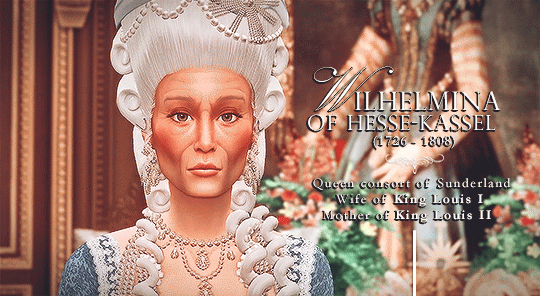
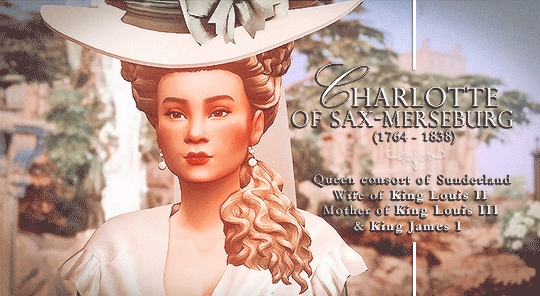



↬ Warwick Wives (1/7) | royal wives during the reigns of Louis I & Louis II, 1782 - 1817
W I L H E L M I N A was fifty-six at the time of her husband's enthronement, making her one of Sunderland's oldest queen consorts. Despite this, she was famed for her beauty and sharp wit. She had protruding, restless eyes, with a pleasant demeanour. Her representation was a source of stability during the monarchy's early days.
C H A R L O T T E was less shrewd than her mother-in-law. Undereducated and neglected, she came from an obscure German duchy on the brink of extinction. Charlotte’s desire for an informal and relaxed domestic life greatly influenced the upbringing of royal children throughout the late eighteenth and early nineteenth centuries. She remains the most prolific of Sunderland's queens, giving birth to fifteen children—seven boys and eight girls—over twenty-one years.
A M E L I A is the earliest example of a Sunderlandian consort causing a media sensation. Emily, as she was affectionately called, was beloved by the country and her husband, Louis, then Duke of Woodbine. Her marriage stemmed from Sunderland's new alliance with the United Kingdom. This alliance ultimately outlasted the marriage, for Emily would die at age twenty-seven. Her death complicated Sunderland's succession; she and Louis had one son, five-year-old Prince Frederick, who was also of weak health.
M A R I A - C A R O L I N A was the antithesis of Emily—even their hair colours highlighted this. Where Emily was pleasant and free-spirited, Maria Carolina was moody and introverted; Emily was the daughter of a King, a product of the world's largest imperial empire, Maria Carolina was the daughter of a low-ranking prince from Sweden's waining Holstein-Gottorp dynasty. Where Emily was adored by her husband, Maria Carolina hated. The two cousins had never wanted to marry and Louis, still grieving his first wife, waited two years before consummating the union. Over time, Louis grew hostile toward his wife. Running hot and cold, he alternated between ignoring Maria Carolina and tormenting her mercilessly, sometimes driving her to tears.
"If I were to suffer such maltreatment would have hung myself from the balcony at Chester long ago" - Princess Wilhemina, writing on her sister-in-law's troubles
To escape her husband's bullying, Maria Carolina undertook a wide variety of public duties. Today, several institutions and charities bear the name Queen Mary Caroline. Despite her husband's apathy and her own shyness, Maria Carolina formed a loyal circle of close friends at court. It was only after Maria Carolina died in 1841, that Louis III expressed remorse for her mistreatment. He outlived her for another ten years.
King Louis III and Queen Mary Caroline had no surviving children together. When Louis's only son, Hereditary Prince Frederick, died without issue Sunderland was left without a clear successor, promoting the 1835 Succession Crisis. This crisis would last for twenty-five years and put an immense amount of pressure on the next generation of royal wives.
[TRANSCRIPT]
insp (1) (2)
#warwick.extras#warwick.wives#gif warning#✨#ts4#ts4 story#ts4 royal#ts4 storytelling#ts4 edit#ts4 royal legacy#ts4 legacy#ts4 royalty#ts4 monarchy#ts4 screenshots#ts4 historical
181 notes
·
View notes
Text

Age of Empires II: The Age of Kings
1999 - PC
139 notes
·
View notes
Photo

William the Conqueror, Duke of Normandy & King of England (1066-1087)
Map published in “L’Histoire” n°424 (June 2016); included in the “World Historical Atlas” by Christian Grataloup, Les Arènes/L’Histoire, 2019
by cartesdhistoire
In 1066, the victory at Hastings linked England to the continent for several centuries, despite the difficult conquest of the North and Cornwall. In about ten years, William extended Norman power from the Scottish marches to Maine. He stitched the territory with castles, took control of the administration and avoided the creation of vast vassal fiefdoms, apart from the counties facing Wales and Scotland. The duke-king, upon his death in 1087, was in a position to compete with the king of France.
1035: On the death of his father, William becomes Duke of Normandy at the age of 8.
1047: Battle of Val-ès-Dunes. William, allied with the French king Henry I, defeats a coalition of rebel Norman barons.
1051: Edward the Confessor, King of England, asks William to succeed him.
1052: Breakdown of the alliance between William and Henry I.
Around 1053: Marriage of William and Mathilde of Flanders.
1063: Harold is taken prisoner by Gui de Ponthieu. William had him released and demanded that he undertake to recognize him as king of England upon Edward's death.
1066, October 14: Battle of Hastings.
1066, December 25: William crowned king of England.
1069-1070: Rebellion in northern England and its suppression.
1083: Death of Queen Mathilde. She is buried in the Abbaye aux Dames de Caen, which she founded.
1085-1086: Census for the completion of the Domesday Book.
1087: Death of William. He is buried in the Men's Abbey of Caen, which he founded. His eldest son, Robert Courteheuse, succeeded him as Duke of Normandy; his third son William II Roux becomes king of England.
1204: Philippe Auguste, king of France, defeats John Lackland and conquers Normandy. It is the end of the cross-Channel empire created by William.
98 notes
·
View notes
Text


The Restoration of the Roman Republic ... in the Middle Ages? The Forgotten Commune of Rome
Today it seems men often have Rome on their minds with Tik Toks and polls indicating that men often think about Rome on a daily basis. I'm assuming that most of these thoughts revolve around the Roman Empire, lesser so the Roman republic, some the Eastern Roman (Byzantine Empire), and few think about the Roman monarchy. However I guarantee that almost no one thinks about the medieval Roman Republic known as the Commune of Rome.
In the 12th century central Italy was directly ruled by the Pope through the Papal States. One of the hot topic political issues of the day was the "investiture controversy", which was debate over who had the power to install bishops and other important clergy; the Pope or secular authorities. This evolved into a debate on who would have ultimate governing authority, the Pope, or the secular government, most notably the Holy Roman Empire. At the time, many cities in Italy were growing disgruntled with the rule of the Pope and the rule of nobles who supported the Pope. This resulted in popular uprisings in which cities overthrew the Papal government and declared themselves independent, thus forming various city states and communes in Italy.
In 1143 a wealthy Italian banker named Geordano Pierlione led a revolt against Papal authority, kicking the Pope out of Rome and declaring an independent Commune of Rome. The next year a monk and priest named Arnold of Brescia arrived in the city, becoming the intellectual leader of the movement and establishing the new Roman Republic. Arnold was a controversial reformer who railed against abuses of Church and Papal authority, decried Church corruption, and advocated a thorough reformation of the Church. Among his ideas he believed that clergy needed to return to apostolic poverty, renouncing all wealth and ownership of property, and also renouncing secular political power. Here's a statue of him in Brescia, Italy today.

With Arnold at it's head a new Roman government was formed and modeled after the ancient Roman Republic, with 56 senators who were not of noble class, 4 from each of Rome's medieval districts, and executive authority invested in a "patrician". The new republic refused to use the title "consul" as it had become an inherited noble title after the fall of the Western Roman Empire. Nobles and aristocrats above the rank of knight were not allowed and thus most noble titles were abolished.
Of course the Pope, then Lucius II, was not going to tolerate such a rebellion and attempted to take back the city. In 1145 he formed an army and laid siege to the city. Amazingly the Romans drove away the invaders, with Pope Lucius II being killed in the battle after being bonked in the head with a rock.
The new republic flourished; drafting news laws, reforming medieval Roman society, making alliances with other Italian city states and war with others, setting up courts, and minting coins.
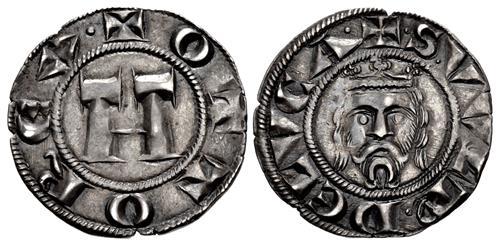
The Roman army was reformed, and a new capital building was constructed on the Capitoline Hill known as the Palazzo Senatorio (the Senate Palace), which still stands today but is much different after being heavily renovated by Michelangelo in the 1530's.
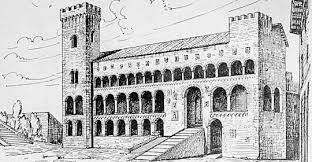
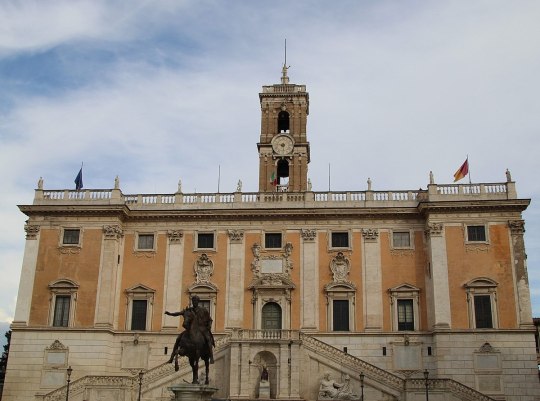
Originally the new Roman Republic swore fealty to the Holy Roman Emperor. However Rome and the Empire had a falling out. In 1149 the Roman Senate invited the German king Conrad III to the city to be coronated Roman Emperor. Rome's enemies were growing, so the Roman Senate offered Conrad this title in return for protection. Conrad had already been elected as Holy Roman Emperor and was due to be coronated, but the Roman Senate was proposing that he be THE Roman Emperor, as in like, a real Roman Emperor whose authority is defined by the Roman Senate, and not a Holy Roman Emperor whose authority was defined by the Pope and a loose confederation of high ranking German, Italian, Austrian, and Czech nobles. In the Holy Roman Empire the emperor is elected by the highest ranking nobles of the land. The Roman Senate was claiming that it had the authority to choose Roman emperors as the senate did during the ancient Roman Empire. Well, lets just say that Conrad probably didn't take too kindly to the Roman Senate attempting to usurp the governing structure of the Holy Roman Empire. In the middle ages a group of lower class burghers and knights cosplaying as Roman senators was not a good basis for a Europe spanning universal imperial monarchy. When Conrad died he was already cutting a deal with the Pope to snuff out the republic.
Conrad died in 1152 but his successor, Frederick Barbarossa continued the deal with the Pope to end the Roman Republic. It was one of the few times Frederick and the Pope agreed on anything. In 1155 a combined Papal/Imperial army invaded Rome. The city quickly fell and Arnold of Brescia was captured and burned at the stake. His ashes were scattered into the Tiber River.

Amazingly the Roman Republic lived on. Frederick Barbarossa was coronated by Pope Adrian IV as Holy Roman Emperor, an act which led to a new revolt among the Romans. Frederick put down this revolt, killing 1,000 Romans in the process, but afterwards he simply left the city and never returned after becoming bogged down in the complex politics of Italy. The Pope also left Rome, having to deal with a papal schism, resulting in no one being left in charge of the city and thus another restoration of the Roman Republic.
In 1167 Rome made war on the neighboring city of Tusculum, a long time rival of Rome who had supported the Pope and became a papal capital after the foundation of the republic. The Count of Tusculum appealed for help to the Holy Roman Empire, and Frederick I sent a small army of 1600 men. The Romans had an army of 10,000 made up of peasant militia who were poorly armed and poorly trained. While heavily outnumbered the Imperial army consisted of well armed and trained knights and professional soldiers. The Imperial army easily defeated the Romans at the Battle of Monte Porizio on May 29th, 1167, a battle which would later be called, "the Cannae of the Middle Ages". The Imperial army would continue to march on Rome, but by a stroke of luck for the Romans would be struck with the plague and forced to turn back. The Romans got their revenge against Tusculum in 1183 when they conquered and burned the city to the ground Carthage style.
The beginning of the end of the republic came in 1188 when Pope Clement III made a power sharing deal with the senate in which the people would elect senators but the Pope would have to approve the senators. The senate agreed to this in order to secure the protection of the Pope as the Holy Roman Empire was still a threat. Over the coming decades popes would reduce the number of senators until by the early 13th century, there was just one. Soon that single senate post was directly chosen by the Pope, and eventually it became a hereditary position. Before you knew it, French and Spanish nobles were becoming Roman senators and Roman senators ruled as autocrats at the behest of the Pope. By the end of the 13th century, the Roman Republic was dead.

202 notes
·
View notes
Photo

Hellenistic Warfare
When Alexander the Great died in 323 BCE, he left behind an empire devoid of leadership. Without a named successor or heir, the old commanders simply divided the kingdom among themselves. For the next three decades, they fought a lengthy series of wars - the Wars of the Diadochi or Wars of the Successors - in a futile attempt to restore the tattered kingdom. Although the Hellenistic Age saw Greek language, art and philosophy flourish throughout Asia, there were few advances in military tactics. Instead, it was a time of “kingdoms and their armies.” The successors inherited an army borne out of the reforms of Philip II of Macedon. He was an innovator; the first Greek to master siege warfare, and with his son Alexander, they made Macedon the foremost power in both Greece and Asia. Together, Alexander and his father would create an army unlike anything the ancient world had ever seen.
Philip's Military Reforms
From his father Amyntas III and brother Perdiccas III, Philip acquired an army that was badly in need of restructuring. On his ascension to the throne in 359 BCE, he realized that the old ways were no longer dependable. He immediately initiated a series of major military reforms. To begin with, he increased the size of the army from 10,000 to 24,000, and enlarged the cavalry from 600 to 3,500. To make the army unified he issued new uniforms and made each soldier swear an oath to the king. A soldier was no longer loyal to his home town or province but loyal to the king and Macedon. While he retained the traditional phalanx - whose very nature required constant drilling and obedience - he made a number of improvements, adding a more effective shield and replacing the old Corinthian helmet with one that provided for better hearing and visibility.
Among several changes in weaponry, Philip added the ominous 18 foot sarissa which had the advantage of reaching over the much shorter spears of the opposition. Besides the sarissa, a smaller double-edge sword, or xiphos, for close-in-hand fighting was issued. And, lastly, he created a corps of engineers to develop siege weaponry. In the end Philip took a poorly disciplined group of men and turned them into a formidable, more professional army. This was no longer an army of citizen-warriors but an efficient military force, eventually subduing the territories around Macedon as well as subjugating most of Greece. It was this army that helped Alexander to cross into Asia and conquer the Persian Empire, but it was also the same army, with relatively few changes, that the successors used throughout their three decades of war.
Continue reading...
33 notes
·
View notes
Text

The Regula Solis Epoch: Masterlist

The Regula Solis Epoch takes place in a renaissance era— in a time where the golden age of the Remurian Empire loomed over the heads of the people of Teyvat.
Although each one includes the story of someone different, they all have one thing in common:
The Golden Age of Teyvat.
☀️
Volume I: Abandon Ship
(mermaid!neuvillette x fem!pirate!reader)
With one of the Remurian fleets hot on your tail and stolen treasure of the crown on your ship, you were ready to take to the Eastern Seas.
When one of your crewmates catches a mermaid of all things on the outskirts of the Dark Sea, you finally think you've hit the jackpot when it comes to treasure.
In the end, however, you come to a startling revelation: is all the treasure in the world really worth more than a life? And suddenly, you have to make a choice... either a huge sum of gold, or the man you've fallen head over heels in love with.
Volume II: Leaving London
(kazuha x gn!knight!reader)
The legendary pirate ship known as “The Alcor” has begun stirring up trouble in the Northern Seas. Although Queen Catalina does not see it as a threat, the General of the North Wind Knights thinks otherwise.
With the risk of angering the Queen on his hands, General Anton issues an order for all knights a part of the navy to seize every last one of The Alcor’s crew.
With no choice but to listen, you obediently set out to hunt down these pirates. However, it doesn’t exactly go according to plan when you cross blades with a foreigner to the Northern Winds.
Volume III: Flesh and Bone
(hunter!tartaglia x gn!werewolf!reader | ao3 exclusive)
The bitter cold forests of Snezhnaya were not kind, nor welcoming to humans. Lurking in the darkness of the tundra were glowing eyes and warning growls.
After being ardently warned to never trespass farther than the outline of trees meeting the wastelands, Ajax takes the risk and crosses to the frozen tundra. With a bag slung over his shoulder and a determination to show his father that the wastelands were fit to be hunting grounds, he readied his bow.
Amidst the hunt, he finds a wounded wolf on the brink of death. Deciding to show it mercy and heal its wounds, Ajax soon finds that this “wolf” is not your normal run of the mill animal… and taking it back to the village was a grave mistake.
Volume IV: Kaleidoscope
(criminal!xiao x fem!adventurer!reader)
Being called to serve Lady Iris, you were expecting just about anything to be asked of you. However, being tasked to watch over a prisoner who stole from King Remus’ grand vault was something else entirely.
Amidst your journey to retrieve this item, you begin to wonder if the prisoner you were tasked to watch over is even a prisoner at all. He makes no move to escape, and it seems as if he does not plan on talking to you. Finding the exact item he stole was not easy either, and it appears that your journey will get worse as the truth slowly unravels.
In the end, you find yourself wondering who is to be trusted: the foreigner from Liyue, or Lady Iris, who bore no hesitation in sending your friends to their deaths.
Volume V: Masquerade
(lyney x fem!vampire!reader)
As a descendant of the noble Edana line, you grew up with an ardent belief that humans were entirely food and nothing more.
For centuries, you live holed up in your family’s manor, your boredom growing tenfold with each new decade that passes.
Eventually having enough of your boring, high class lifestyle, you step onto the streets for the first time in almost a millennia, looking for something to satiate your interest.
This comes in the form of a budding magician, who wants nothing more than to break down your walls and show you what the world looks like in blinding color. A world that wasn’t coated in gray, and a love that wasn’t forged in blood oaths.
Volume VII: Ambrosia
(venti x fem!dancer!reader | ao3 exclusive)
It was time for the annual Festival of the North Winds in the eastern kingdom of Mondstadt.
Amidst the preparations for the festival, a wandering bard arrives in the bustling city. Without a clue on this bard's origin, the people of the city welcome him and his talent for music with open arms.
Venti soon finds himself in a predicament when a dancer from a foreign nation steals his audience time and time again. As one who would not back down from a challenge, Venti decides to entertain her and participate in her game.
However, when she mysteriously disappears the night before her performance at the festival, Venti realizes it is up to him to go find her. He doesn't realize that he would get himself wrapped up in a feud between an ex-soldier and the army of Snezhnaya.

author’s note: the “regula solis epoch” is a project i have been working on for literal months now. it takes place a few hundred years before the archon war and is completely canon divergent. i tried to incorporate as much remuria lore as i could. i hope that all of you enjoy reading these as much as i will writing them. each fic will be released in order, so “abandon ship” will be first on the list!
taglist — ; open! - if you’d like to be added to the taglist for any and/or all of these upcoming fics, then leave a comment or send a msg to my inbox!
divider: @/cafekitsune
© 2024 mikashisus. do not plagiarize, copy, repost, feed to ai, or translate my works to any other platforms.
#genshin impact#genshin#genshin x reader#— ☀️ the regula solis epoch#neuvillette#neuvillette x reader#neuvilette genshin#kazuha x reader#kazuha#genshin kazuha#tartaglia x reader#tartaglia#childe#genshin tartaglia#genshin impact xiao#xiao#xiao x reader#genshin lyney#lyney#lyney x reader#dainsleif#genshin dainsleif#dainsleif x reader#venti#genshin venti#venti x reader#genshin masterlist#—mikashisus masterlists.
87 notes
·
View notes
Text
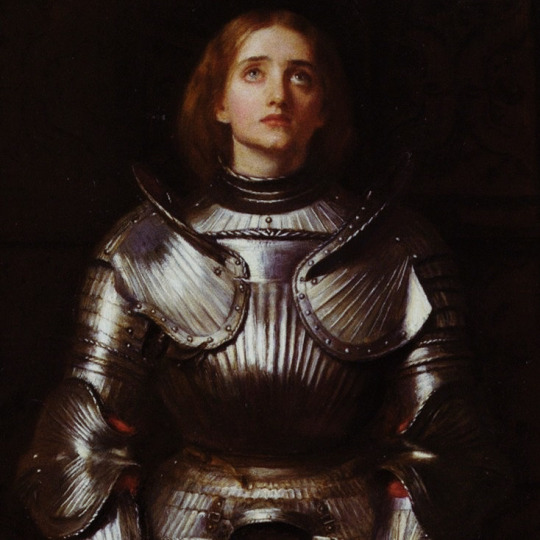


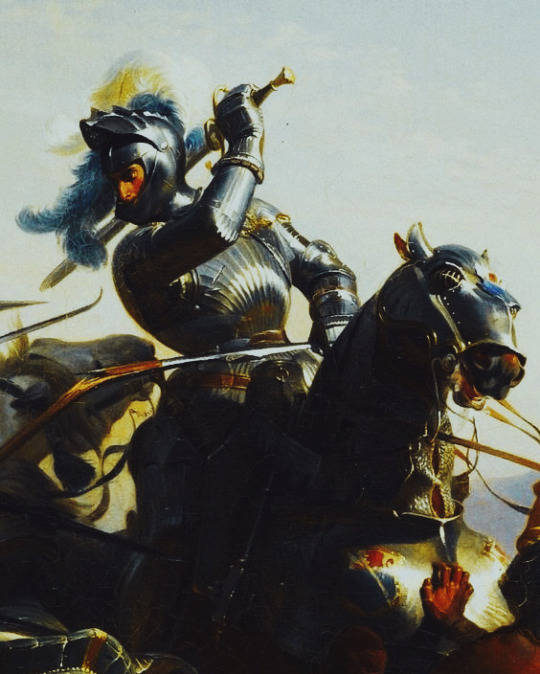




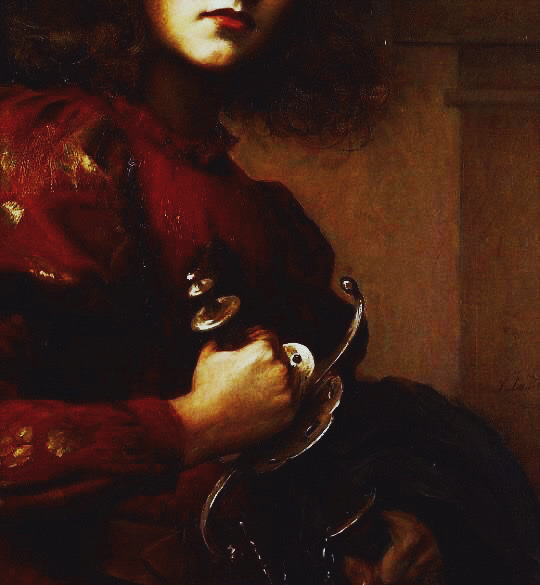
Antónia Rodrigues was arguably one of the most intriguing and significant in portuguese History, yet she remains largely unrecognised.
She was born on the 5th of january 1572, the daughter of Leonor Dias and Simão Rodrigues, and lived in the parish of Nossa Senhora da Apresentação, in Aveiro. Simão was a deep-sea fisherman, which meant he spent most of his time away from home and due to this and because of poverty, they decided to send Antónia to Lisbon, where her married sister lived.
Once in Lisbon, Antónia began to feel “more liberated” — partly because her sister was quite neglectful and careless in her upbringing, which instilled in Antónia a haughty character “unsuitable” for her age, and always refusing to do tasks deemed “appropriate for her gender”.
Until one day, she learned that a caravel named “Nossa Senhora do Socorro” was settling sail for Mazagan with a cargo of wheat. At the time, Antónia was 15 years old, yet in the eyes of the people, she was remarkably beautiful, elegant, with long black hair, dark eyes, a tanned complexion, and full lips. So, she decided to cut her hair and wear “masculine” clothes, adopted the name “António” and enlisted for the crew of the coveted caravel. The captain immediately noted how easily António climbed the masts, without fear of falling or being disturbed by the swaying of the storms.
After his martime adventure and upon reaching Mazagan, due to the merit and good reputation, he had gained throughout his adventure, António decided to enlist as a simple soldier in the portuguese troop and the troops’ governor immediately accepted. The moroccans attempted several times to regain Mazagan from the portuguese empire, and although they were always repelled, they never gave up trying. It was in one of these attempts that António, a young soldier, with his bravery, won the decisive battle, and from then on, he was regarded as a hero.
António began to be invited by wealthy and well-known families of the time to soirées, he engaged with ladies, dancing and drinking with them, having long conversations with many of them. With that, Rodrigues, to conceal his true identity, nurtured some of these relationships and many of them ended up falling in love with him. Among these ladies. Beatriz de Menezes, the daughter of a very influential nobleman, stands out. Beatriz was so in love with António that she became seriously ill with the fear of losing her beloved, prompting her father to compel António to ask for his daughter’s hand. However, the soldier had no choice but to reveal the whole truth about himself, including the fact that she came from a very poor and humble family.
The truth is Antónia suffered no punishment, and little is known about her life after this revelation, except that she eventually married an acquaintance from the portuguese troop, and together they had a son (whose identity remains unknown), she returned to Portugal and shortly afterward became a widow. King Filipe II of Portugal and III of Spain even granted her a great proze for her bravery in crossing the boundaries imposed by society.
Antónia Rodrigues passed away in 1641.
58 notes
·
View notes
Text
Winners' Round 1 – Region C – Match 5

#gvgb64#age of empires ii the age of kings#aoe2#age of empires 2#ducktales 1989#ducktales nes#ducktales#disney
4 notes
·
View notes
Text
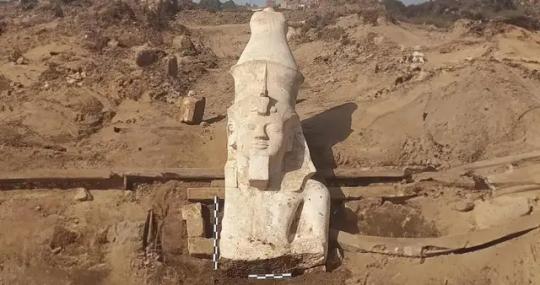
The Long-Lost Top Half of an Enormous Ramses II Statue Found
A German researcher found the lower section of the Egyptian pharaoh’s likeness nearly 100 years ago.
Archaeologists in Egypt have uncovered the upper half of a towering statue of Ramses II, cracking a century-long mystery. Found in the ancient city of Hermopolis (now Ashmunein), the 12.5-foot-tall limestone fragment lines up perfectly with the lower section of a sculpture discovered nearby in 1930.
The ancient statue depicts Ramses in a seated position, adorned with a crown and a headdress topped with a cobra, according to a statement from the Egyptian Ministry of Tourism and Antiquities. The dual crown indicates Ramses’ simultaneous authority over the kingdoms of Upper and Lower Egypt, while the cobra represents royalty, writes the National’s Kamal Tabikha.
The upper area of the back column of the statue is etched with hieroglyphs that list Ramses’ many titles, glorifying the king as “one of ancient Egypt’s most powerful pharaohs,” says Bassem Jihad, head of the excavation team, in the statement, per a translation by Reuters.
Preliminary scans have confirmed that the carved limestone block is a continuation of the lower section of the statue, which was found in the same area in 1930 by German archaeologist Günther Roeder. With its halves combined, the statue would have loomed at a height of nearly 23 feet.
As the third pharaoh of Egypt’s 19th dynasty, Ramses ruled over a sprawling empire that stretched from modern-day Sudan to Syria. During his reign—which spanned 1279 to 1213 B.C.E., making it the second-longest of any Egyptian monarch—he ushered the kingdom into a golden age of power and wealth. Known as Ramses the Great, the pharaoh’s legacy was cemented by a slew of monuments and statues constructed in his name, both during and after his reign.
The joint Egyptian and American dig team originally began its exploration of the Ashmunein area with the goal of discovering a religious complex from Egypt’s New Kingdom era (1550 to 1070 B.C.E.). Though the researchers ultimately stumbled onto something entirely different, they remained pleased with their results.
“Though we have not found the complex we were initially looking for, a statue of such importance is a sign that we are digging in the right place,” Adel Okasha, an antiquities official who oversaw the dig, tells the National.
Next, the team will create a model envisioning what the statue looked like in antiquity, when it was fully intact.
“Not only is it a wonderful opportunity to have a whole other massive statue of the famed king, it also adds to our general understanding and fills gaps in our data on the large corpus of Ramses II’s statuary,” Salima Ikram, an Egyptologist at the American University in Cairo, tells the National. “Through each discovery, we have been able to trace changes in the style during the course of his very long reign.”
By Catherine Duncan.

#The Long-Lost Top Half of an Enormous Ramses II Statue Found#ancient city of Hermopolis#Ramses II#limestone#limestone slabs#ancient artifacts#archeology#archeolgst#history#history news#ancient history#ancient culture#ancient civilizations#ancient egypt#egyptian history#egyptian pharaoh#egyptian art
84 notes
·
View notes
Text

Saint Adelaide
932-999
Feast Day: December 16
Patronage: abuse victims; brides; empresses; exiles; in-law problems; parenthood; parents of large families; princesses; prisoners; second marriages; step-parents; widows
Saint Adelaide, born a princess, was given in an arranged marriage at the age of 16 to Lothair of Italy. He died 3 years later and his successor ordered Adelaide to marry his son. When she refused, he had her imprisoned and seized the throne. She escaped and sought help from King Otto of Germany to regain it. He conquered Italy and they married in 951. Pope John XII crowned them as rulers of the Holy Roman Empire in 962. After Otto’s death Adelaide became estranged from her stepson Otto II, left the court and lived in Burgundy with her brother, but they reconciled before his death and she returned as Regent. One of the most influential women of the 10th century, Adelaide used her position and power to help the poor, evangelize and build and restore monasteries and churches.
Prints, plaques & holy cards available for purchase here: (website)
77 notes
·
View notes
Text

Kings and Their Lovers
Male Kings and Their Homoromantic or Erotic Relationships from Antiquity to Modern Times
History offers numerous examples of male rulers who had homoromantic or erotic relationships with other men. These connections were often complex and influenced by cultural, societal, and personal factors. Here are some remarkable examples:
Antiquity
Alexander the Great (356–323 BC)
The Macedonian king and famous conqueror had a particularly close relationship with Hephaestion, his childhood friend and confidant. Plutarch described Hephaestion as "Alexander's lover." After Hephaestion's death, Alexander was inconsolable and ordered a nationwide mourning. The Persian eunuch Bagoas is also mentioned in ancient sources as Alexander's lover.
Emperor Hadrian (76–138 AD)
The Roman emperor is known for his passionate relationship with the young Greek Antinous. When Antinous drowned in the Nile, Hadrian was devastated. He had his lover deified, founded the city of Antinoopolis, and erected statues of Antinous throughout the empire. These actions testify to Hadrian's deep affection and grief.
Middle Ages
Richard the Lionheart (1157–1199)
Richard I of England had a close relationship with Philip II of France. Contemporary chroniclers described how the two kings "ate from the same table and drank from the same cup every night" and "slept in the same bed." Although the exact nature of their relationship remains disputed, such reports suggest a very intimate connection.
Edward II of England (1284–1327)
Edward II had an intense relationship with Piers Gaveston, which chroniclers of the time described as excessively intimate. Later, he developed a similarly close relationship with Hugh Despenser the Younger. These connections led to political tensions and ultimately contributed to Edward's deposition.
Modern Times
James I of England (1566–1625)
James, also known as James VI of Scotland, had several close relationships with men. Particularly notable was his connection with George Villiers, the Duke of Buckingham. In letters, James called Villiers "my sweet child and wife" and "my dear Venus boy." This correspondence indicates a passionate and intimate relationship.
Louis XIV of France (1638–1715)
Although the Sun King is primarily known for his female mistresses, there are indications of intimate relationships with men. The Duke of Saint-Simon reported in his memoirs of several homosexual affairs at court, including one between Louis and his brother Philippe, Duke of Orléans.
Frederick the Great of Prussia (1712–1786)
Frederick had close relationships with several men, particularly Hans Hermann von Katte in his youth. Although Frederick married, the marriage remained childless and distant. Instead, he surrounded himself with a circle of close male friends and confidants.
Ludwig II of Bavaria (1845–1886)
Known as the "Fairy Tale King," Ludwig II had close and presumably romantic relationships with several men. Particularly well-known are his connections to Richard Hornig, his stable master, and Paul von Thurn und Taxis. Ludwig's homosexuality was an open secret during his lifetime and contributed to the accusations that led to his dethronement.
Modern Era
Tsar Nicholas II of Russia (1868–1918)
Although later married, the last Russian Tsar had a close relationship as a young man with his cousin, Prince Nicholas of Greece. In letters, he described their "special friendship" and the "wonderful nights" they spent together.
These examples show that same-sex relationships among rulers were not uncommon. The nature and perception of such connections varied greatly depending on the cultural and historical context. While some relationships were lived relatively openly, others remained hidden due to societal norms and political implications or were only hinted at in documentation.
It is important to note that modern concepts of sexual orientation and identity cannot be directly applied to historical figures. Many of these rulers would not have identified themselves as homosexual or bisexual, as these terms did not exist in their time. Their relationships must be understood in the context of their respective culture and time.
Nevertheless, these historical examples offer important insights into the diversity of human relationships and show that same-sex love and affection existed even at the highest levels of power.
Text supported by GPT-4o, Claude AI
Image generated with SD1.5. Overworked with inpainting (SD1.5/SDXL) and composing.
#History#LGBTQHistory#AlexanderTheGreat#Hephaestion#Hadrian#Antinous#RichardTheLionheart#EdwardII#JamesI#LouisXIV#FrederickTheGreat#LudwigII#NicholasII#QueerHistory#SameSexRelationships#Monarchs#RoyalLovers#HistoricalFigures#HumanRelationships
23 notes
·
View notes